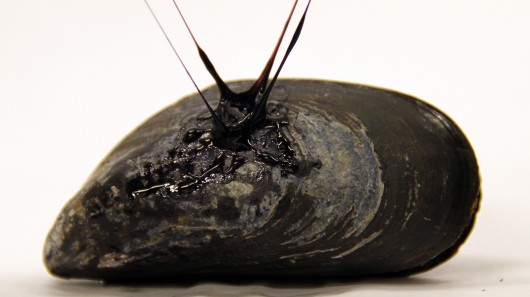Mussels are remarkable creatures, not only in how good they taste steamed and buttered, but also in their ability to cling to rocks that are pounded by ocean waves.
Their tenacious grip comes courtesy of byssal holdfast fibers that are secreted by the mussels themselves. Last year, scientists from Germany’s Max Planck Institute for Colloids and Interfaces analyzed these fibers in an effort to determine how they were able to maintain their brute strength, while also giving slightly to avoid snapping. This week, scientists from the University of Chicago announced that they have been able to replicate the fibers, producing an adhesive that could be used on underwater machinery, as a surgical adhesive, or as a bonding agent for implants.
Conventional adhesives typically involve a trade-off between strength and brittleness – they give, but can be ripped, or are hard, but can be snapped. Such substances are linked by covalent bonds, which are held together by two atoms sharing two or more electrons. U Chicago’s synthetic mussel adhesive, however, is linked by metals. This allows it to exhibit both strength and flexibility, as the bonds automatically self-heal if broken, without adding any energy to the system.









